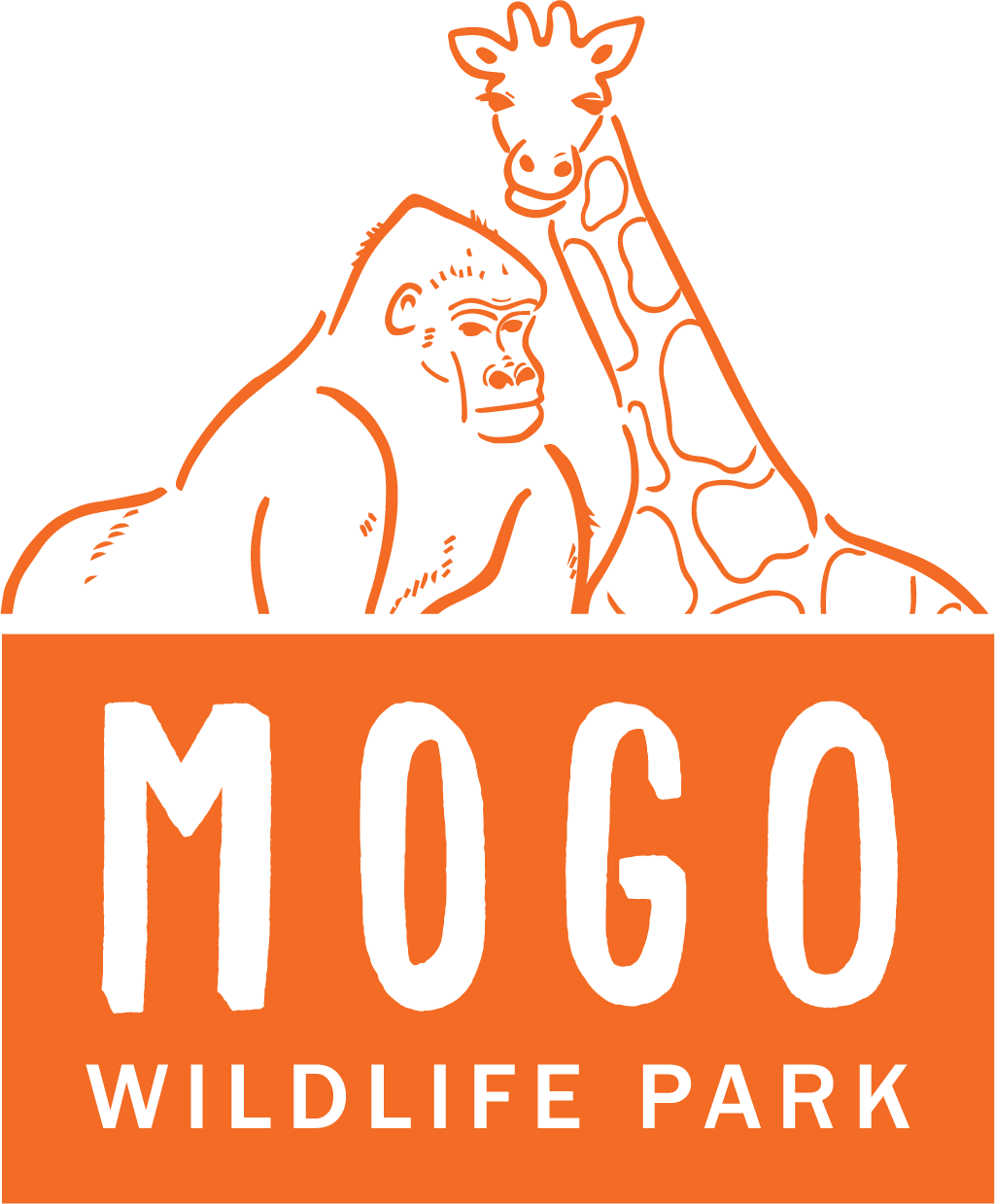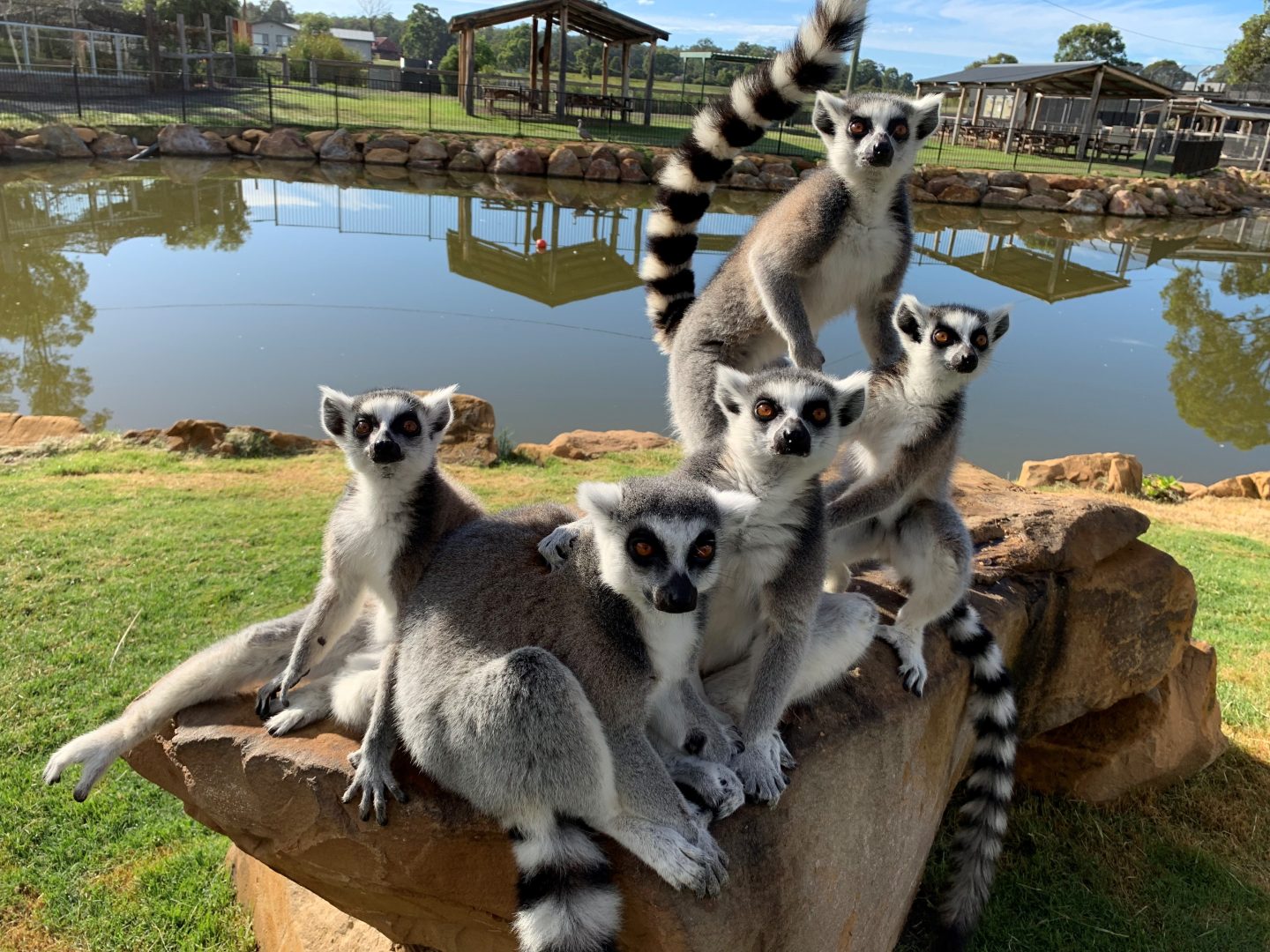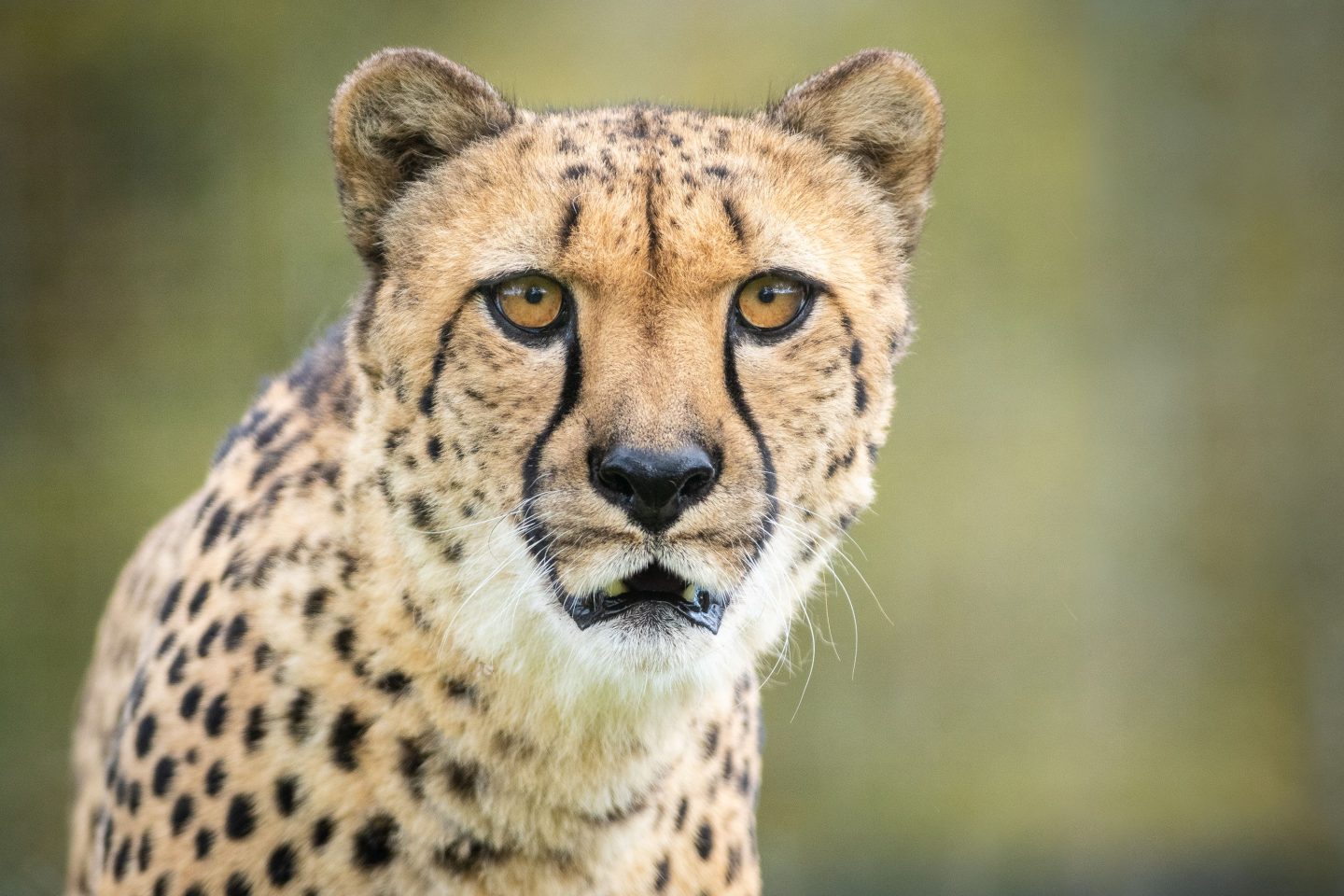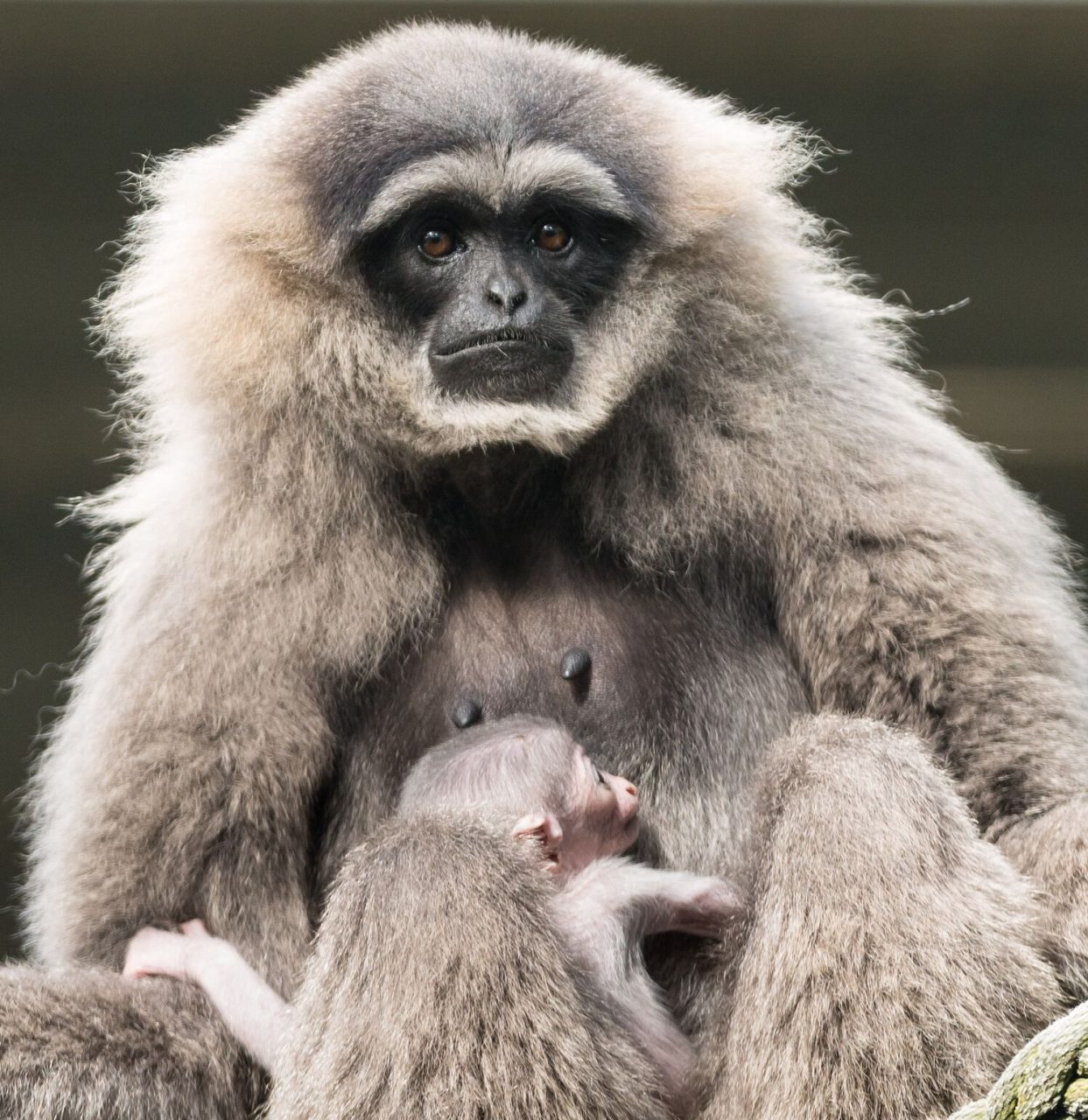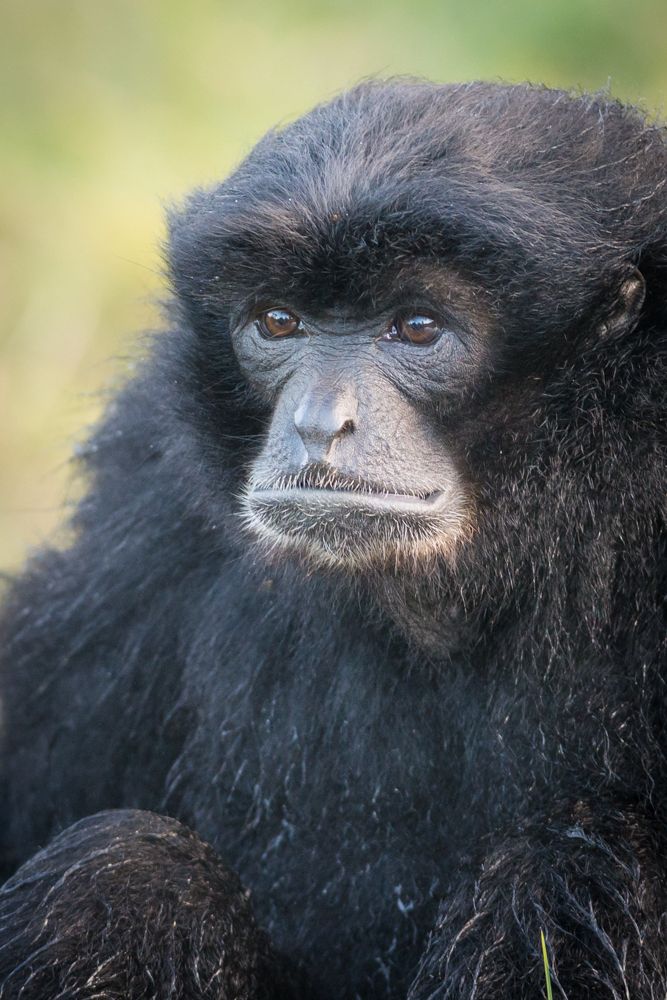RING-TAILED LEMUR
Lemur catta



Ring Tiled Lemurs 'sun worship' which means they face their tummies to the sun and stretch their arms out wide to warm themselves up.
Ring-tailed Lemurs live in groups of 5-25 animals with the females making up a well-ordered hierarchy that dominates over males. Female lemurs remain in the group whilst males join other groups, thus we have a group of males on the islands at Mogo.
Diet
Ring-Tailed Lemurs diet consists mainly of fruit, leaves, flowers, bark, sap and the occasional invertebrate. Due to the fact that the vegetation in forests inhabited by these lemurs is sparse and non-continuous, they are often found traveling on the ground.
Social
Ring-tailed Lemurs live in groups of 5-25 animals with the females making up a well-ordered hierarchy that dominates over males.
Endangerd
Unfortunately Ring-Tailed Lemur populations are rapidly declining in the wild, with around 50% of their natural habitat having been destroyed in the past 35 years. This steep decline in numbers has left them classified as an "Endangered" species on the IUCN red list.
The forests that Ring-Tailed Lemurs prefer are quickly being converted to farmland, overgrazed by livestock, or harvested for charcoal production. Ring-tailed lemurs are also hunted for food in certain areas of their range and are frequently kept as pets.
Fortunately, they are found in several protected areas in southern Madagascar, but the level of protection varies widely in these areas offering only some populations refuge from hunting and habitat loss.
ANIMAL FACTS
RING-TAILED LEMUR
GROUP NAME
Troop
Native To
Madagasca
SIZE
Torsos of full grown Lemurs are around 95-110cm Average weight of 2.2kgs
BABY NAME
Pup
Habitat
Ring-tailed lemurs are found in south and southwestern Madagascar; from Fort-Dauphin west and as far north as Morandava on the west coast. A small additional population lives near the mountains of Andringitra on the southeastern plateau.

Did You Know?
Male Ring-Tailed Lemurs rub stinky secretions into their tails and wave them at rivals when they wish to demonstrate aggression.
MEET OUR
ANIMAL FAMILY

stay in touch with Your Australian wildlife parks family
Stay up-to-date and subscribe to our newsletters
Your information is only utilised by Australian Wildlife Parks. For more information see our privacy policy.
Read our Ticket Terms and Conditions of Entry for all Australian Wildlife Parks here
MOGO Wildlife Park acknowledges Aboriginal people as the traditional custodians of the land on which our offices and operations are located, and we pay our respects to Elders past, pres ent and future.
© 2019-2024 Australian Wildlife Parks • Privacy Policy • Disclaimer
